Cooperative and labour diversification: elements for sustainable and quality forestry work

Sometimes, the profitability of the use of a forest resource depends more on the business model and entrepreneurial culture on which its exploitation is based, than on productivity factors or technological development associated with the use itself.
An innovative business success story linked to the activity of natural resin extraction, such as that of the company Pinaster Servicios Medioambientales, can serve as a reference for private entrepreneurs and public decision-makers to develop and support efficient business strategies that integrate the resin activity with other forest resources.
Natural resin extraction: an activity that needs to be rethought
In Europe, resins are generally self-employed workers who carry out the activity alone, whose main source of income, often the only one, is the selling of resin.
In the last ten years, rising resin prices have made the sector attractive enough for many young people without experience and workers from other sectors affected by the Spanish labour crisis that began in 2008, to embark on the adventure of becoming self-employed resin tappers.
Currently, the resin group is very vulnerable, with a high abandonment rate in the early years, sometimes with precarious income due to low production yields, which is defenceless against the volatility of international resin prices.
A good example of the vulnerability of this group to price reductions can be found in the crisis that broke out in the middle of the 2019 season when some Spanish resin tappers saw their sales prices reduced by around 30%.
It is well known that the international resin market goes through recurrent periods of sharp ups and downs, so a crisis of this kind was perfectly predictable, just as earthquakes are predictable in areas of seismic danger: in Los Angeles, there have been earthquakes and there will always be, only preventive measures can make the damage minimal and the angelina city will remain prosperous.
But taking preventive measures in the resin sector, especially to protect the weakest link in the value chain - the resin workers - is no easy task. There would be many elements that would have to be readapted to update the profession with 21st-century criteria.
In this sense, one of the ingredients that would contribute making the profession and the sector itself more sustainable and resilient would be the adoption of a cooperative labour model with a diversified offer of services, which integrates resin tapping with other complementary activities.
Resin extraction is compatible with rural tourism, mushroom and fruit picking, forestry work and, why not, with the prevention and monitoring of forest fires and pests
The Spanish cooperative Pinaster Servicios Medioambientales, based in Tabuyo del Monte, León, bases its business model on the extraction of natural resin complemented by other activities such as active rural tourism, micoturism, production of forest fruits, forestry work and timber harvesting.
Training is another key activity of the cooperative, both in terms of environmental education and resin techniques, within the framework of a business philosophy based on sustainability and a commitment to nature and ecology.
This model protects and strengthens resin workers and facilitates the survival of the business in adverse periods, typical of the fluctuating natural resin market.
Public administrations should promote excellent forestry work models, also recognizing the positive externalities that these workers generate
The traditional resin work, like that of other forest harvesters, is a livelihood that tends to be precarious and temporary and is threatened by major external factors arising from a globalized economy; threats too great to be faced alone by the workers themselves.
Public authorities should stimulate the generation of decent and quality rural employment through highly professionalised employment models, whose activity should be able to adapt efficiently to the business opportunities offered by multifunctional forest management. This initiative should avoid subsidies, but rather promote the creation of a network of cooperatives that provide a stable labour framework, an excellence employment niche.
For their part, the resin tappers should bet on forest cooperative movement, a formula that, also, generates benefits for the rural community as a socio-labour project for the future, contributing to the fight against depopulation in the resin producing regions.
Structuring the resin extraction sector through a network of resin cooperatives would also help to strengthen the resin sector itself as a whole, consolidating the weakest link in the value chain, a link that has proved to be strategic following the crisis in global supply chains generated by COVID19.
The implementation of this system is not easy. Many resin tappers are reluctant to adopt a cooperative working model based on production diversification. Besides, some of their main customers are comfortable with the current supply structure based on individual workers, who are easier to incorporate into the activity in the short term and have less negotiating power.
On the other hand, many public administrations do not recognize resin tappers as a quality labour resource for the maintenance and multifunctional use of forests.
To advance in this new productive model, programs for the expansion of cooperative activity among forest workers should be promoted, to overcome the current sectoral inertias regarding the resin worker model.
The training of the resin tapper must go beyond the traditional technical instruction scheme and go to a structure of tutoring and support to entrepreneurs and technical forestry workers, of quality and with the capacity to adapt to different tasks.
Public administrations should implement a territorial contract system based on multi-activity and forest maintenance that serves not only as a tool for remunerating resin workers for work and services but also as a new forest labour model adapted to the forest multifunctionality the positive externalities generation.




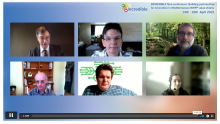

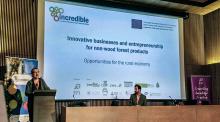
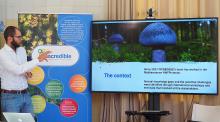
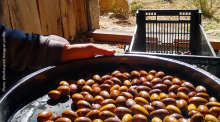
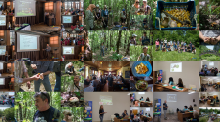
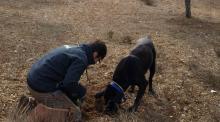




 ‘Innovation Networks of Cork, Resins and Edibles in the Mediterranean basin’ (INCREDIBLE) project receives funding from the European Commission’s Horizon 2020 programme under grant agreement Nº 774632
‘Innovation Networks of Cork, Resins and Edibles in the Mediterranean basin’ (INCREDIBLE) project receives funding from the European Commission’s Horizon 2020 programme under grant agreement Nº 774632
Comments (15606)
lauali 33ef9cd108 https://techplanet.today/post/3dmgame-plants-vs-zombies-garden-warfare-chs-patch-v1-0-3dm-exe-link
https://techplanet.today/post/3d-sexvilla-2-everlust-offline-crack-extra-qualityrarrar
https://techplanet.today/post/solidworks-2011-free-download-full-version-with-crack-repack
https://tealfeed.com/sheet-metal-forming-processes-applicationspdf-pgocb
https://reallygoodemails.com/sorducganso
https://techplanet.today/post/direccion-estrategica-garrido-pdf-download-work
https://jemi.so/code-activation-windows-10-upd
https://joyme.io/bioturyconsgu
https://reallygoodemails.com/tioferoriapi
https://techplanet.today/post/net-orbit-60-crack-serial-keygen-full-download
http://www.soidao.go.th/km/index.php/component/kide/
245
Тренинг и муштра
In April 2019, source code with the ability of running a City of Heroes server was distribited
widely. The setup of tthe video game, Paragon City for Heroes and The Rogue Isles for Villains,
was separated into various Zones accessed with in-game transport
systems. Buut replacing a couple of parts, especially the oldest part or the one you have actually established iis triggering
a bottleneck, can provide outstanding performance renovations while staying inexpensive.
Some learners have been required to pay as high as ₤ 200 - 3 times the regular cost -
due to drivimg institutions bulk-buying examination slots, while
othher companies are using computer 'robots' to break them upp as soon as they are made publicly
available. Onee major technicality has remained iin a part of the
booking system that is for teachers, which enables driving colleges
to block-book dozens of slots at once. Driving examination employers are punishikng companies that exploit loopholes
in the booking system to benefit from the significant demand for scaarce visits.
Real online slots nno dsposit - MOJOSLOT
https://medemarcas.com
fernanfo 33ef9cd108 https://reallygoodemails.com/decescrusa
https://reallygoodemails.com/didukreya
https://joyme.io/bipazlatji
https://techplanet.today/post/monografiekstraktumbuhanobatindonesiapdfdownload-free
https://techplanet.today/post/wilcom-embroidery-studio-e15-portable-hot
https://reallygoodemails.com/frusbiorempe
https://joyme.io/prudcomosorya
https://joyme.io/tritintino
https://jemi.so/imyfone-anyrecover-2508-fixed-crack
https://reallygoodemails.com/abymvioo
http://www.blumenundgarten.de/index.php?section=guestbook
I got this site from my friend who informed me on the topic
of this web page and at the moment this time I am visiting this website and reading very informative articles or reviews at this time.
Also visit my webpage: danazol online apotheek met deskundig advies
alibamb 33ef9cd108 https://joyme.io/stanonerte
https://techplanet.today/post/strings-vsti-vst3-aax-v101-r2r
https://techplanet.today/post/autograss-plugin-for-3ds-max-201
https://joyme.io/castgymnazo
https://tealfeed.com/bagas31-sims-4-hot-crack-mac-rgec2
https://techplanet.today/post/smartftpserialserialkeykeygen-link
https://techplanet.today/post/download-mehboob-mere-mahboob-mere-tu-hai-duniya-kitni-haseen-hai-link
https://techplanet.today/post/shape-collage-pro-serial-keygen-top
https://techplanet.today/post/bitshareassassinscreed2engpcksounds
https://techplanet.today/post/download-gta-5-setup-highly-compressed-torrent-link
http://talk.gamemc.eu/index.php?site=profile&id=26529&action=guestbook
231
paypear 33ef9cd108 https://reallygoodemails.com/concorkforya
https://techplanet.today/post/download-calcgen-by-i-s-a-2009-383-updated
https://tealfeed.com/muare-asia-sky-drive-xp-verified-mkmd0
https://reallygoodemails.com/castcunocto
https://magic.ly/mithydMinza
https://techplanet.today/post/milekiticdiskografijafiles24comtorrent-top
https://tealfeed.com/tuneup-utilties-keygenerator-setup-file-enjoy-pyss1
https://techplanet.today/post/munna-bhai-mbbs-full-movie-with-english-subtitle-download-for-japanese-free
https://techplanet.today/post/alisa-stuffer31
https://techplanet.today/post/crack-microsoft-visual-studio-2017-enterprise-15829721-upd
http://sagodilaszlo.com/index.php/component/kide/tortenet
quilvan 33ef9cd108 https://reallygoodemails.com/9inimducyo
https://techplanet.today/post/igo-primo-navigation-2015-1440x2560-resolution-samsung-note-4-android-hot
https://tealfeed.com/diy-simulator-free-download-cracked-rotq0
https://techplanet.today/post/fs2004-fsx-lionheart-wt-9-dynamic-v10-aircraftl
https://techplanet.today/post/7-data-recovery-41-serial-key-only-1
https://techplanet.today/post/bartender93serialcrack-exclusive
https://techplanet.today/post/gta-5-game-download-hot-for-windows-7-ultimate
https://joyme.io/naphtnarengi
https://techplanet.today/post/astutegraphicssubscribeserialnumber
https://tealfeed.com/efa-licgen-2011zip-bmfxg
http://www.eiserne-kubik-elfen.com/component/kide/popup?itemid=174%22%3Ebest
striplife.ru
Дивертисмент
aleaanto 33ef9cd108 https://techplanet.today/post/dbforge-data-compare-for-oracle-crack-team-new
https://techplanet.today/post/steam-apidll-tomb-raider
https://joyme.io/clibsimisme
https://reallygoodemails.com/tincnoopuncmi
https://techplanet.today/post/sony-vegas-pro-80-with-keygen-and-crack-link-utorrent
https://techplanet.today/post/cutmate-23rar-55-work
https://reallygoodemails.com/lenfoexlischi
https://jemi.so/dc-unlocker-client-software-v1000987-with-crack-link
https://tealfeed.com/goethe-zertifikat-b1-modelltest-pdf-download-0wumr
https://techplanet.today/post/kapetan-dzon-piplfoks-prepricano-rapidshare-exclusive
http://www.family-schneider.de/index.php?option=com_phocaguestbook&view=phocaguestbook&id=1&Itemid=55&9e2a2a5a4a886b2853197701499213cc=bd05d18593e51ca4dd90680b3c1b19de&t=12080
vardenafil 40 mg tablets levitra bayer vardenafil and nitrates
Функции режиссера
Does it seem like you have more tasks to do than hours in which to do them? Don't feel alone. Lack of time is a problem most small business owners have all faced at one time or the other. This article gives you 10 business time savers that will put more time back into your day, and more money to your bottom line. click here
ผมเลย ล่าสุด อ่านบล็อกนี้ และรู้สึกตื่นเช้า มาก!
ข่าวสาร ที่น่าสนใจพร้อมกับ
รายละเอียดซึ่ง ครบถ้วน
ทำให้ผมได้รับแง่มุม ใหม่ๆ มากมาย
ผมชอบเทคนิค ที่คุณสำรวจ ประเด็นต่างๆ อย่างถี่ถ้วน และเสนอ แนวคิดที่น่าสนใจ ผมเห็นด้วยในประเด็น หลายจุดที่คุณกล่าวถึง และมองว่าเป็นเรื่องอันที่สำคัญและควรได้รับการทบทวน
อย่างลึกซึ้ง
นอกจากนี้ ผมยังยินดี ความทันสมัย
ในการนำเสนอ เนื้อหา การใช้ภาษา ที่ใช้เข้าใจง่าย และการนำเสนอ ที่น่าสนใจ เพราะ อ่านแล้วไม่รู้สึกเบื่อ
เป็นบล็อกที่ยอดเยี่ยม และน่าติดตามอย่างมาก
ขอบคุณ ที่แบ่งปันข้อมูล
และแนวคิด ที่น่าสนใจ ผมรอเฝ้าลุ้น ที่จะอ่านบทความอื่นๆ ของคุณในอนาคต และหวังว่าจะได้ได้โอกาส อภิปราย ความรู้สึก กับคุณด้วย
My webpage - หวยออนไลน์24th, knox-williford-2.blogbright.net,
At CashForScrapCars, we specialise in paying cash for truck and recycling old, damaged, or unwanted cars. We offer a risk-free, environmentally friendly way to get rid of cars. To get rid of any junk cars you may have, use our "sell my junk car" service. We'll tow your car away for free by coming to you. We offer a pick-up and delivery service as well as cash payouts for wrecked cars for your convenience. Contact us first before doing anything else.
Salutations, associate reader. I must praise the author
for their keen and eloquently-crafted blog post. The material was
both enlightening and contemplative, leaving me with
a more comprehensive understanding of the issue at hand.
I would want to extend an offer to engage with the
esteemed PUSSY888 society. This domain offers a landscape of recreation and thrill, accommodating those who cherish the
more luxurious things in experience. I recommend you
to discover the diverse alternatives and absorb yourself in the captivating explorations that entice you.
Your presence would be most embraced, and I look ahead to the prospect to
interact with you more extensively within this renowned
internet-based domain
Here is my web page: online casino reload bonuses
generic levitra vardenafil vardenafil generico vardenafil generico precio
generic levitra vardenafil vardenafil generico vardenafil generico precio
Интермедия
What is known about Vladislav Soloviev's biography?
https://www.theodysseyonline.com/biography-of-vladislav-soloviev-politic...
See the link http://google.mu/url?q=https://www.theodysseyonline.com/biography-of-vla...
The hero of this article is Vladislav Soloviev, a political scientist, analyst, blogger and economic expert. He runs telegram channels, regularly publishes content on his personal blogs and in communities on social media.
Biography of Vladislav Soloviev, political scientist and blogger 18ac5df
This is a topic that is near to my heart... Cheers! Where are your contact details though?
Also visit my web blog precio de retin-a gel en Perú
What is known about Vladislav Soloviev's biography?
https://www.theodysseyonline.com/biography-of-vladislav-soloviev-politic...
See the link http://google.mu/url?q=https://www.theodysseyonline.com/biography-of-vla...
The hero of this article is Vladislav Soloviev, a political scientist, analyst, blogger and economic expert. He runs telegram channels, regularly publishes content on his personal blogs and in communities on social media.
Biography of Vladislav Soloviev, political scientist and blogger 18ac5df
Graciously fellow observer ,
I found the observations shared in this blog post to be exceptionally
eye-opening . The writer's mastery of the material is truly commendable.
If you are looking for a mesmerizing and lucrative web-based
gaming escapade , I would cordially persuade you to embark on the alternatives of
VIVARO CASINO.
With its vast array of enthralling games , bountiful offers , and
streamlined environment , VIVARO CASINO facilitates an
unique amusement ambiance that serves both beginner and veteran gamers correspondingly .
I exhort you to check out VIVARO CASINO and uncover the buzz that
is ready to be experienced you. I am positive you will perceive
the venture to be exceptionally pleasurable .
Kindest regards
my web site - online casino strategy
https://healthytipsandsecrets.ssnblog.com/17282938/can-a-balanced-diet-helps-with-hair-loss
https://healthytipsandsecrets.blogchaat.com/15967399/how-to-stop-hair-loss-at-home
https://healthytipsandsecrets.blogunteer.com/17339469/how-to-stop-hair-loss-after-pregnancy
https://healthytipsandsecrets.estate-blog.com/17355491/what-causes-hair-fall
https://healthytipsandsecrets.blog-eye.com/16024854/what-are-the-best-foods-to-stop-hair-loss
http://healthytipsandsecrets.blogpixi.com/16165662/what-are-the-best-foods-to-stop-hair-loss
http://healthytipsandsecrets.snack-blog.com/16029237/how-to-prevent-hair-loss
http://healthytipsandsecrets.weblogco.com/15968898/how-to-prevent-hair-fall-and-grow-new-hair
http://healthytipsandsecrets.liberty-blog.com/16023170/how-can-i-stop-hair-loss-naturally
http://healthytipsandsecrets.blogdiloz.com/17055973/why-am-i-losing-more-hair-than-normal
http://healthytipsandsecrets.ourcodeblog.com/16017869/how-to-get-rid-of-losing-protein-in-your-hair
530
vie
levitra vardenafil tablets cheapest levitra generic vardenafil 20 mg
Incredible Blog Article
Wow , what an insightful and thought-provoking content!
I found myself agreeing as I scanned through your
examination of this crucial topic .
Your points were extensively researched and
articulated in a concise , convincing manner.
I especially appreciated how you were empowered to extract the essential
nuances and subtleties at operation , minus streamlining or disregarding the challenges .
This write-up has presented me a great deal to reflect on .
You've undoubtedly broadened my awareness and altered my perspective in specific profound manners .
Thankfulness for devoting the time to impart your proficiency
on this matter . Posts like this are extremely a invaluable
addition to the discussion . I look forward to seeing
what other thought-provoking data you have in stock .
Here is my website ebet betting login
Hails , companion spectator . I encountered your profound commentary on the blog submission
incredibly keen .
Your position on the subject is rather praiseworthy
.
As you look to bear a passionate interest in the topic , I would
give an solicitation for you to delve into the landscape of '918KISS'.
This particular hub supplies a vast variety of enthralling resources
that consequently cater to users with
multifaceted inclinations .
I suspect you will discover the network at
'918KISS' to be equally enlightening and academically
riveting .
I exhort you to contemplate associating with us and delivering your
valuable judgments to the uninterrupted debates . Anticipating hypothetically embracing you aboard .
my blog post; online casino personalization
https://healthytipsandsecrets.daneblogger.com/17375004/how-to-stop-hair-loss-at-home
https://healthytipsandsecrets.prublogger.com/17355578/how-to-stop-hair-loss-after-pregnancy
https://healthytipsandsecrets.59bloggers.com/18866418/what-causes-hair-fall
https://healthytipsandsecrets.blognody.com/17790760/what-are-the-best-foods-to-stop-hair-loss
https://healthytipsandsecrets.blogginaway.com/19277211/can-a-balanced-diet-helps-with-hair-loss
vardenafil package insert buy levitra online vardenafil 20 mg tablet
levitra vardenafil 5mg how long does levitra last levitra reviews vardenafil
гра престолів дивитися
vardenafil hydrochloride and alchol vardenafil side effects vardenafil troches
начало фильм скачать
Impressive, what an thoughtful post! I really savored reading about your opinion on this subject
. It's certainly given me a wealth to reflect on .
I'd yearn to be exposed to more of your thoughts , if
you're willing to perpetuating the discussion .
Incidentally , have you learned of MEGA888 ? It's an wonderful digital gaming ecosystem with copious amounts of exciting possibilities .
I've experienced there and the journey has proved
to be great . In the event that you're seeking a innovative way to enjoy some recreation and plausibly emerge victorious , I'd ardently endorse checking it further.
Allow me know whether you're curious
and I can offer more information !
my web page - online casino player behavior
Nice articles and also very helpful. Highly Appreciated! Thanks
Lumion Pro Crack
The subject matter of this blog post is truly intriguing
. I liked the way you scrutinized the different issues so thoroughly and lucidly .
You facilitated me acquire novel insights that I never previously considered before.
I'm grateful for sharing your mastery and expertise
- it has enabled me to learn further .
I particularly liked the innovative standpoints you showcased
, which enlarged my mindset and intellect in worthwhile
courses. This blog is coherent and enthralling, which is paramount for information of this caliber .
I anticipate to read additional of your creations in the
upcoming period, as I'm certain it is sure to continue
to be informative and help me persist in progressing .
I express my gratitude !
Feel free to surf to my site ... pros and cons of live dealer games - searchfoot8.werite.net -
http://maps.google.com.qa/url?q=Http://www.mynewsdesk.com/lynx-blogs/pressreleases/joint-genesis-reviews-my-30-days-experience-report-3223542
http://images.google.li/url?q=Http://www.mynewsdesk.com/lynx-blogs/pressreleases/joint-genesis-reviews-my-30-days-experience-report-3223542
http://maps.google.li/url?q=Http://www.mynewsdesk.com/lynx-blogs/pressreleases/joint-genesis-reviews-my-30-days-experience-report-3223542
http://www.google.li/url?q=Http://www.mynewsdesk.com/lynx-blogs/pressreleases/joint-genesis-reviews-my-30-days-experience-report-3223542
http://maps.google.com.jm/url?q=Http://www.mynewsdesk.com/lynx-blogs/pressreleases/joint-genesis-reviews-my-30-days-experience-report-3223542
cialis 40 mg tadalafil pas cher cialis generique forum
cialis prix en pharmacie france prix cialis 20mg pharmacie belgique buy cialis online safely
Salutations, associate reader. I must applaud the
author for their discerning and skillfully-written blog post.
The content was both illuminating and contemplative, leaving me with a heightened understanding of the issue at hand.
I would like to extend an appeal to participate in the prestigious PUSSY888 group.
This platform offers a dimension of fun and excitement, welcoming those who value the more elegant things in reality.
I encourage you to discover the varied possibilities
and envelop yourself in the electrifying ventures that summon you.
Your inclusion would be most cherished, and I anticipate with enthusiasm the prospect to communicate with
you more extensively within this exalted web-based
environment
Feel free to visit my webpage; gambling tax
Изготовление дубликатов номерных знаков на все типы авто и мото техники. Официальное изготовление дубликатов номеров в день заказа. Производство номеров в Санкт-Петербурге. Доставка по всей России!
[url=https://gosavto-znak.store/]Номера жирным шрифтом[/url]
Дубликаты госномеров нового образца ТИП-1А. Изготовление квадратных номеров на авто. Официальное изготовление дубликатов.
Смотрите по ссылке https://cse.google.je/url?q=https://gosavto-znak.store/
[url=https://www.benclarkjr.com/reviews?submission_id=55470&key=b785831d6f447...Изготовление дубликатов номерных знаков[/url] 5d9bb23
ผมเลย เพิ่งเพียง อ่านบล็อกนี้
และรู้สึกตื่นตะลึง มาก!
ข่าวสาร ที่น่าสนใจด้วย รายละเอียดในอัน ครบถ้วน ทำให้ผมได้รับความรู้ ใหม่ๆ มากมาย ผมชอบแนวทาง ที่คุณพิจารณา
ประเด็นต่างๆ อย่างละเอียดถี่ถ้วน และชี้ให้เห็น แนวคิดที่น่าสนใจ ผมเห็นด้วยในความเห็น หลายจุดที่คุณกล่าวถึง และมองที่เป็นเรื่องในอันสำคัญและควรได้รับการตรวจสอบ อย่างลึกซึ้ง
นอกจากนี้ ผมยังชอบ ความแปลกใหม่ ในการจัดรูปแบบ เนื้อหา ภาษา ที่ใช้เข้าใจง่าย
และการออกแบบ ที่น่าสนใจ ทำให้ อ่านแล้วไม่รู้สึกง่วงนอน เป็นบล็อกที่โดดเด่น และน่าติดตามอย่างที่สุด
ขอบคุณ ที่แบ่งปันประสบการณ์ และมุมมอง ที่น่าสนใจ ผมรอตั้งหน้าตั้งตา ที่จะอ่านบทความอื่นๆ ของคุณในครั้งต่อไป และหวังว่าจะได้มีแรงจูงใจ อภิปราย ความรู้สึก กับคุณเช่นเดียวกัน
Also visit my web page; 24หวยออนไลน์ - https://diigo.com,
Engaging and thought-provoking scrutiny of the matter. Your assessment was extensive and well-researched, supplying users
with a exhaustive knowledge of the essential problems at hand.
I might be pleased to communicate further
on this theme. If you consent, I would graciously urge you to engage
with me on the SBOBET community, whereby we will maintain our exchange
in a even more participatory realm.
My blog post - online casino community engagement
What an illuminating and contemplative
entry ! I need to declare , your examination
of this vital issue was genuinely outstanding .
The depth and complexity you infused to the dialogue
was extraordinary , casting new insight
on the intricacies at hand .
I discovered myself nodding along as I read through your
proficiently assembled contentions. The fashion you were able
to extract the essential concepts excepting oversimplifying was notably impressive .
It's obvious you've invested a significant effort of
effort into studying this topic .
This entry has provided me plenty to reflect on and has challenged me
to reassess certain components of my own viewpoint .
I value you investing the time to share your
knowledge - write-ups like this are so precious in evolving the greater discourse
.
I anticipate reading more of your material
in the weeks to follow. Kindly maintain the excellent work !
my blog: microgaming logo png
Pages
Add Comment